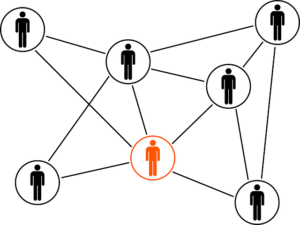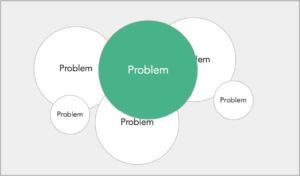In sports, you might see a Most Valuable Player and wish he was on your favorite team; surely the addition of that one player would make your organisation better. But that is not how it works. For a Most Valuable Player to make a difference, he needs to fit within your organisation’s strategy, enhance its strengths, while mitigating its weaknesses. It is not about getting a star player, it is about getting a star player that is right for you.
Minimum Viable Products (MVPs) are designed to test how committed to your product potential clients are – not how interested they are in it. You are in business to make money, and interest does not convert to sales. But commitment…commitment is something that motivates people to buy.
Last post we discussed the process of developing an MVP and touched on how low-fidelity MVPs can be crucial to guide the early days of your company development. The best low-fidelity MVPs are the ones that are quickly built and effectively test your prospective customers commitment to your product. So long as the MVP can effectively validate your assumptions in a quantifiable manner, it works. The only issue is that there are a variety of low-fidelity minimum viable product (MVP) types you can choose from.
In this post we will focus on the different low fidelity MVP types and help you find that right version for your organisation.

Pre-Order MVP Type
A Pre-Order MVP is about getting people to commit money to purchase a product that hasn’t been built yet. The most well known method of building a pre-order MVP is using a crowdfunding platform like Kickstarter. A company will go onto this platform and describe the product it wants to build, its ability to build it, and a description of how the funds collected will be allocated. Finally, the company promises to produce the product if it reaches a certain level of pre-orders by a certain time. If it does not achieve that level of funding in time, it is not required to produce the product.
If the customer likes the product, she will pre-order the product and generally provide her credit card. She is only charged if the company achieves its stated level of pre-orders.
Pre-Order MVPs allow you to directly test the most important assumption of your product; that people will pay money for it. Pre-Order MVPs work especially well for products that need a base of customers in order to be sustainable or require a upfront cost to build. Pre-Order MVPs are also highly scalable, as the more commitment you generate, the more money you get to build more products.
In practice, every startup will get attempt some version of a pre-order MVP, whether it is through a crowdfunding campaign, getting a letter of intent, or initiating a pilot program.

Audience Building MVP Type
The Audience Building MVP doesn’t generate revenues like a Pre-Order MVP does, but measures your potential customer base’s engagement with the product. You construct an Audience Building MVP by reaching out to your potential client base through communication channels, such as blogs or social media, and developing communities around the service you are trying to provide. If there is a large enough group of interested users, you can justify taking the next step and investing in a working product.
Audience Building MVPs work best for online products, especially if they are social media based. If your team has or can generate a lot of content easily, this might also be a relatively cheap and easy way to validate some of your product’s underlying assumptions. This MVP also works well for offline business such as consultancies, doctor offices and venture capitalists.

Concierge MVP Type
A Concierge MVP is seemingly counter-intuitive, as you take the automation out of the process you want to automate. Instead of building a prototype, you provide the style of service manually to a small group of test customers. The key here is to provide the level and type of service you envision your final product providing – no more, no less. For this MVP type, it is crucial for the test customers to understand that the service is being provided by a person and that in exchange for this personal attention they must be willing to provide extensive feedback.
The downside of this MVP is that it is not scalable at all, but it is not intended to be. The benefit to the developer is that it allows her to get hands on experience seeing how a potential client will work and use their service. Plus, the developer gets paid for using the service. So not only are you measuring a client’s commitment to using the service, but you are also lowering your overall risk by gaining a better understanding of how the service will be used.
Concierge MVPs are great in situations where your potential clients are offline or not comfortable with technology and where customer satisfaction is a decisive competitive advantage. It is also especially useful where logistic issues are difficult to gauge and operational investments to develop an effective online MVP is very expensive.

Wizard of Oz MVP Type
A Wizard of Oz MVP is a variation of a Concierge MVP. Instead of the customer being aware that they are being helped by a human, the MVP is made to look like the process is automated. The benefit of this is to strip away some evaluation issues with Concierge MVP; people are more likely to give negative feedback when they think the problem originates with a machine as opposed to individual performance.
The Wizard of Oz MVP has the same scalability issues as the Concierge MVP, as well as most of the same benefits. This MVP type is best for businesses that will eventually need sophisticated technology for their service to work in industries that are particularly sensitive, such as finance or health.

Single Use Case MVP Type
A Single Use Case MVP focuses on one facet or aspect of the larger issue you want to tackle. For this MVP type to work, you must hyperfocus on this one area and do it exceptionally well. The user experience and design must be impeccable (this is not necessary your product-market fit). The benefit of this approach is that Single Use Case MVPs are generally faster to build and easier to explain to potential customers.
This MVP type is challenging because the lack of complaints about it doesn’t signal something good; it means that people aren’t engaging with it because they don’t see the value of the solution to their business or needs. If you aren’t hearing complaints, it means you have to adjust the assumption that your MVP was testing.
This MVP works especially well companies with an established building or product that are looking to innovate or spinoff a product or for a small business trying to enter a market with established, expensive alternatives.

Other People’s Product MVP Type
Similar to a Wizard of Oz MVP, this version uses a competitor’s services to test the underlying assumptions of the product you want to build. For example, you provide a version of the product you wish to provide by supplementing the information you are able to pull from a competitor’s API. The benefit is that you are quickly able to build an MVP using resources that you know are focused on addressing the same issues as you are and you get to learn more about your competitors. It is important that prior to attempting this MVP type you ensure that you are not violating any of your competitor’s terms of service, or you may be open to a lawsuit.
This option works for teams with limited engineering resources entering into an industry where there are a lot of competitors and difficult to predict logistics.
Regardless of what MVP type your business choose, never lose sight of what all of these variations are supposed to do – test the commitment of your customer base as quickly and inexpensively as possible. Focus on providing the best representation of what you are trying to achieve and remember that bigger is rarely better in the early days
